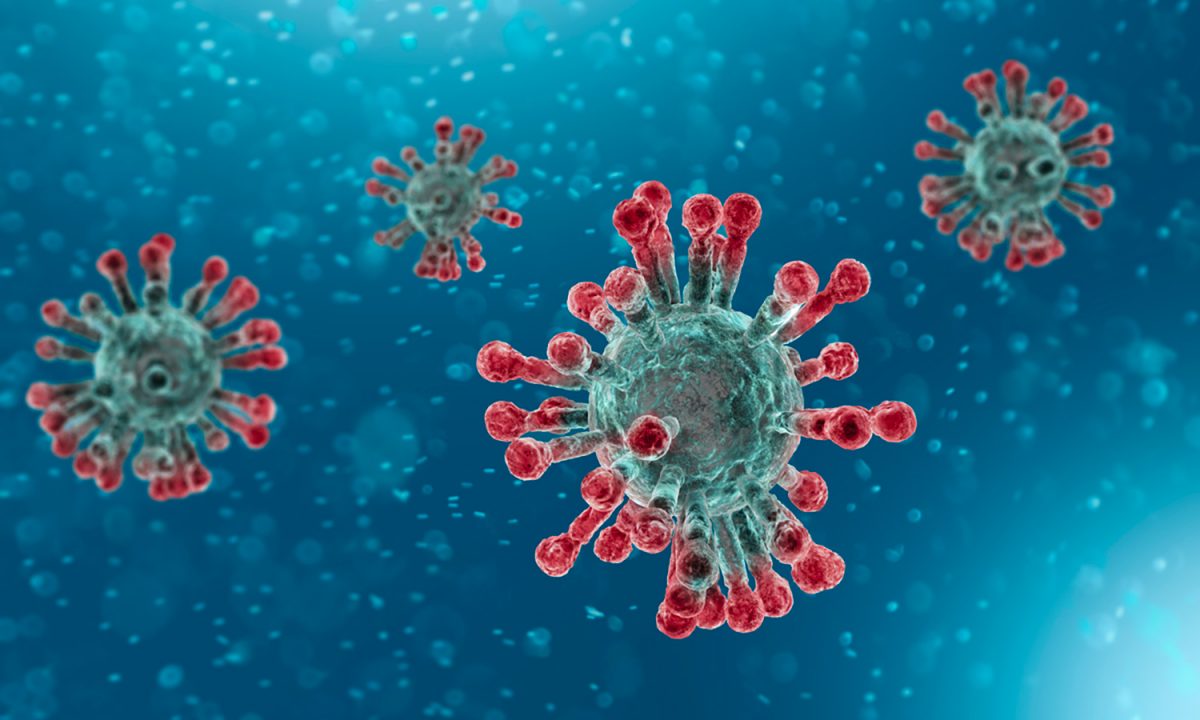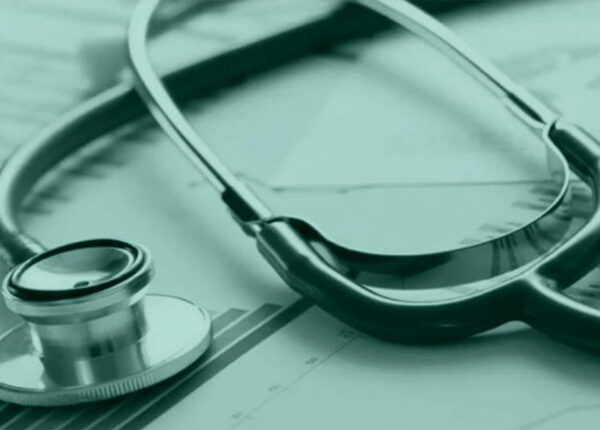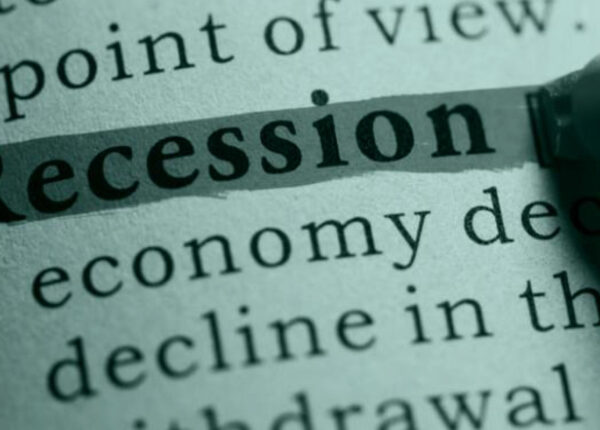Professor Gerry Graham is holder of the Gardiner Chair of Immunology at the University of Glasgow and is a world expert in immunology with a particular focus on the study of chemokines and their receptors. He has over 30 years’ experience working in this area and publishes widely in the top international journals. He is a regular invitee to major international conferences.
He is currently chair of the Wellcome Trust Expert Review Group in the Immune System in Health and Disease and has been involved with numerous other national and international funding agencies. He is a Fellow of the Royal Society of Edinburgh and recipient of a Wolfson Royal Society Research Merit Award. His work is funded by an MRC Programme Grant and a Wellcome Investigator Award.
Investment Background
The economic world has been convulsed by the spread of the coronavirus. Entire economies have been forced into lock-down, unemployment is soaring, GDP has slumped, and emergency fiscal and monetary measures are the order of the day.
The root cause is a virus which is highly contagious with a significant mortality rate. The human toll is immense not just for those infected but also through those impacted by the financial and social impacts of the isolation policy response.
For financial markets, understanding the medical response is a precondition to understanding how the virus and the economic impact will unfold. To help us through these steps we have spent time with Professor Gerry Graham who is one of our expert advisors in the area of biological sciences.
Dr Sandy Nairn FRSE
Investment Partner & CEO
Edinburgh Partners
A Dialogue with Professor Gerry Graham FRSE
Q. Perhaps just to provide some background context, please give us an overview of the virus?
A. Covid-19 belongs to the coronavirus family of viruses which typically cause respiratory infections that can range from mild to lethal depending on the specific virus and the health status of the infected individual.
All living organisms require a genome to allow them to replicate and most living organisms have a genome made from DNA. In contrast, and in common with some other viruses, the coronavirus genome is made from a molecule called RNA. Coronaviruses, like other viruses and pathogens, enter our cells by binding to specific cell surface proteins which then inadvertently help the virus into the cell and cause infection. This interaction is typically between proteins on the surface of the virus and proteins on the surface of our cells. These surface proteins give coronaviruses their distinctive ‘crowns’ or halo-like appearance.
A number of coronaviruses have been identified including three which are associated with severe and potentially fatal disease. These include MERS (Middle East respiratory syndrome related coronavirus), SARS-CoV (severe acute respiratory syndrome coronavirus) and Covid- 19 which is also known as SARS-CoV2 (severe acute respiratory syndrome coronavirus 2).
In terms of transmission rates, one thing that contributes to the apparently higher transmission rates of Covid-19 compared to other viruses, such as the flu virus, is that Covid-19 can be transmitted by people in the pre-symptomatic phase of disease – that is the phase before symptoms develop. Therefore, whilst in other viral infections those who become ill are less likely to transmit the virus because they will be unwell and potentially at home, those infected with Covid-19 are able to transmit it within the population whilst they are apparently healthy prior to the onset of symptoms.
In addition, there may be features relating to the fine detail of the structure of the proteins on the virus’s surface which it uses to interact with our cells, which in Covid-19 may be better adapted for infection than other viruses.
Q. There were many warnings about the dangers of a potential Covid-19 pandemic, why do you think the response has been intermittent? Is it because the nature of the virus took time to become clear, were we conditioned by how previous outbreaks (SARS, MERS, Ebola etc.) did not really hit the developed world – was it complacency or was the pervasiveness genuinely unexpected?
A. It is hard for me to say. The scientific community has raised the issue of potential pandemics for some time. Although relatively rare, there was always the possibility of a high impact event such as this.
I would just note that, in general, viruses do not want to kill their hosts which is why Ebola is not such a successful virus. Viruses that kill the host rapidly are at a ‘dead end’ as they have difficulties in being further transmitted. The widespread transmission of Covid-19 stems from both its asymptomatic characteristics and its relatively low mortality rate.
Q. By necessity the virus and the response have been described in fairly simple terms, but from a biological background would you be able to break out the key elements?
A. Firstly, consider those who have been infected and recover. The expectation is that individuals who have been infected with Covid-19 and subsequently cleared the infection will be immune to further challenges with the virus. In other words, it is likely that those who have been affected and recovered will have developed an immunological memory that may well be protective against secondary infections.
This may mean that such individuals could be allowed, and even encouraged, to re-enter society as soon as practicable.
In terms of treatment, as this is a new virus, for which there is no clear treatment strategy, three broad treatment options are being explored:
- Search for a vaccine – how to stop the virus in the future
- Anti-virals – how to combat the condition
- Cytokine blockers – how to reduce the mortality
Q. Perhaps we could go through each of these just to explain the science in layman’s terms, the probability of success and the likely timelines.
1. Can we begin first with the vaccine?
A. In terms of vaccines, the key issue is how rapidly the virus mutates. One of the problems with flu vaccines is that the seasonal flu virus can mutate and therefore vaccines against one strain may not be protective against another strain. Indications so far are that Covid-19 is a slowly mutating virus raising hopes that vaccination strategies may induce long-term protection.
Our primary defence against viral infections is the immune system. Upon initial encounter with the virus an immune response develops, albeit relatively slowly, which initially involves attempts by the body to recognise the virus and to make an immune response that will neutralise it. Once this immune response has been successfully mounted, some of the immune cells are maintained in our body as what are called ‘memory cells’. Therefore, when we next encounter the virus these ‘memory cells’ know what it looks like and can mount an immediate and robust response. This developed immune memory is why, whilst most of us were infected with chickenpox as children, we are highly unlikely to become infected later in life.
This development of immune memory is also the fundamental basis for vaccination approaches in that vaccination with a ‘disabled’ virus or with individual molecules from the virus can induce a memory response which allows us to very rapidly neutralise the intact virus upon subsequent infection. This is why for so many infectious agents, including viruses and parasites etc., a major way to protect the population from infection and disease is to develop vaccines.
Covid-19 is a new virus and therefore there are no existing vaccines that can be used to this end. However, there are a number of laboratories throughout the world working on developing a vaccine with early signs that this endeavour will be successful. This is assisted by the fact that the virus does not appear to be mutating significantly, unlike flu, for example.
The short-term problem is that vaccines take some time to develop as they often involve the injection of complex molecules or inactivated viruses that are difficult, but certainly not impossible, to manufacture at quantities and at a purity level appropriate for widespread human use. For this reason, there is always a gap between identifying a vaccine target, getting it to mass production and rolling it out for human use. In addition, clinical trials are needed to demonstrate that the virus can work effectively before it is widely available for therapeutic use.
In all likelihood, even once an effective vaccine is developed, it may be many months before it is ready for human therapeutic use. For this reason, it is not plausible to expect vaccine deployment before the end of the year at the very earliest.
2. The anti-virals seem more immediate can you explain more the process by how they work and what our expectations should be?
A. Unlike vaccines, the idea behind the use of anti-virals is that they directly block viral function by interfering with key molecular mechanisms in the virus. Two of the most prominent anti-viral agents being tested for therapeutic effects in Covid-19 patients are Remdesivir and Favipiravir, both of which, using different mechanisms, impair the ability of the virus to replicate its RNA genome. Replication of this RNA genome is central to production of new infectious virus and therefore in principle, these agents can reduce viral replication in an individual and arrest the progress of viral related symptoms.
In terms of expectations of their efficacy in Covid-19 patients, clinical trial data will be available within the next few weeks with at least some anecdotal evidence suggesting positive effects in a number of patients. Clearer insights will require more in-depth clinical trial data which will take time to gather.
If I had to put a timescale on this it would be of the order of a few months before one would expect to see deployment. The key to remember is that where the anti-virals are being repurposed, they have already been through the approval process such that their therapeutic use will be permitted. Problems of drug production associated with vaccines are not so pertinent for the anti-virals which are small organic molecules that can be made at huge levels relatively easily, rapidly and at sufficient purity for clinical use. If these were to be successful in clinical trials, then they can be rolled out very quickly.
3. Cytokine storm, as I understand, is caused by the body’s immune system effectively overreacting with immune cells causing localised inflammation which can then spiral in some patients causing hyperinflammation with potentially deadly consequences. This has been a feature of other coronavirus and respiratory illness. Does this mean that we have drugs that can be applied or is the science more advanced?
A. One other complication in Covid-19 patients is a dangerously overdeveloped inflammatory response in the lung driven by what is called a ‘cytokine storm’. Cytokines are proteins which regulate inflammation which is normally a carefully controlled process. However, when expressed at very high levels, the cytokines can lead to hyperinflammation which can cause severe tissue damage. There is evidence that Covid-19 patients with severe lung complications can display a cytokine storm which is essentially massive overproduction of inflammatory cytokines. There is therefore an interest in trying to suppress this hyperinflammation in these patients by inhibiting the cytokines.
In terms of the cytokine storm, basically cytokines normally help set up inflammation at sites of wounds or infection. This is a positive thing and is designed to heal wounds and kill bugs in the wounds. However, when the body makes too many cytokines in a particular organ or tissue this leads to excessive inflammation. Inflammation involves white blood cells entering the site and these white blood cells carry extremely toxic agents within them. These are normally designed to kill bugs but if these agents are released inappropriately, they can kill our own tissues. Hence the cytokine storm which involves overproduction of cytokines e.g. in the lung, leads to excessive inflammation which can cause severe tissue damage.
Notably, many of the cytokines implicated in the ‘cytokine storm’ are also implicated in tissue damage in autoimmune diseases such as rheumatoid arthritis. Rheumatoid arthritis has been studied for many decades and there are therefore very well-developed therapeutic agents capable of inhibiting a number of cytokines that have been developed for rheumatoid arthritis, but which could be repurposed for use in Covid-19 patients. Therefore, there is an ongoing plan to examine the potential therapeutic benefits of existing anti-cytokine therapies, developed for other inflammatory diseases, in Covid-19 patients.
There is some suggestion that blocking inflammation may be advantageous for Covid-19 patients, but it is not entirely clear at what stage. It may be that these cytokine blockers will be ideally administered to patients before they reach the stage of requiring ventilation. There are also possible complications of inhibiting these cytokines because, whilst they potentially induce damage, they may also be involved in the anti-viral response and so inhibiting their action might have unexpected negative consequences.
Again, the true value of these agents in treating Covid-19 patients awaits in-depth clinical trials which are currently ongoing throughout the world. In terms of deployment there are some similarities with anti-virals in terms of speed to market for many of the anti-cytokine drugs, although most of these are antibodies which are slightly trickier to make than the anti-virals. Nevertheless, these could be ready fairly quickly.
Q. There seems to have been a variable response in terms of testing yet according to the expert advisors testing is key both to understanding and mitigating the risks. What would be your views on this?
A. Firstly, one has to distinguish between the different tests. There are two types of Covid-19 tests available. The first test is to see if you have the virus. This allows people to discriminate between those who are actively infected and those who have symptoms due to other viruses e.g. flu. This test is designed to detect one of the molecules in the virus thereby indicating its presence. The second is the test to determine if you carry antibodies to the virus. This reveals whether you have been infected at some previous stage and therefore, are potentially immune and can re- enter society.
The antibody test, or seroprevalence test, is important in determining what percentage of the population has been affected. This is critical to understanding how likely we are to develop herd immunity. It also key to determining the overall death rate that can be attributed to the virus. It is highly likely that many people may be asymptomatic and never have been aware of being infected and therefore not counted in current analysis of infected people versus fatalities.
The current ratio of deaths to Covid-19 cases may be an artificially high estimate of fatality rates for the reasons mentioned above.
Q. Why would people by asymptomatic?
A. It is not clear why some people remain asymptomatic and some develop severe disease. In some cases, this relates to age or underlying health issues but beyond that it probably relates to very complex issues of the individual’s immune response to the virus as well as the viral load present in an individual. In essence some people will simply be better at responding to the virus than others.
Q. There has been much discussion about the root of the virus in Wuhan and the nature of the food market, the role of bats etc. Do you have a view on this?
A. More often than not the fundamental issue is hygiene. Disease initiation and spread is frequently related to poverty and low income for precisely this reason. Improved hygiene is critical and whatever can be done to address this should be done, but it has to be remembered that this is related to income levels.
Specifically, Covid-19 appears to have originated from a poorly regulated market in Wuhan where wild animals are traded and where presumably basic health and cleanliness are compromised. Diseases have also been associated with conditions where rats are prevalent and act to spread disease. Whilst the presence of wild animals carrying pathogens is an obvious problem for establishing disease, dealing with it is non-trivial since many of these markets exist in areas of moderate to extreme poverty that are not easily subject to regulation.
The likely origin of the virus from animals (potentially bats) also suggests that the virus can jump species i.e. its infective abilities are not restricted to one species. This is a relatively common feature of many virus families, including coronaviruses.
Q. From a biological perspective, do you think this is the new normal? i.e. should the world expect relatively regular viral outbreaks? Can this be interrupted at source with policy action, does there need to be effective fire walls to slow transmission and finally, do we need to improve or implement previous pandemic protocols?
A. No, I do not think this is the ‘new normal’. Outbreaks of this nature are relatively rare. Remember there were some key aspects which assisted the propagation, most notably how long the virus could exist in the body before revealing itself, allowing it to spread without the knowledge of the carrier.
There is some evidence that the extent of national BCG vaccination programmes is related to Covid-19 cases and deaths. In countries with universal BCG vaccination programmes the rates of infection and death appear lower than in countries (e.g. Italy, Spain, USA) without such programmes. At the current time though this is more a statistical association rather than one resting upon any proven medical cause and effect.
Q. What about herd immunity, will this play a role?
A. Herd immunity is a key goal but one that may take time to come to fruition due to the social distancing and isolation programmes currently in effect in many parts of the world. The basic idea behind herd immunity is that the more people that develop immunity the fewer people carry the virus in the community and therefore the lower the viral load in that community. You probably need approximately 60% of the community to be immune to a particular pathogen to develop proper herd immunity. This is why the schools are good potential sites for developing herd immunity as the children may well become infected with Covid-19 and develop immunity without displaying the pathologies associated with older, or medically compromised, members of the community. The danger of course is that the children can carry the virus back to more vulnerable members of their family making the acquisition of herd immunity a carefully balanced exercise.
Q. This is clearly a very difficult question in sense that lockdowns potentially inhibit development of herd immunity and since there is no counterfactual there is no way of estimating their impact on mortality?
Yes, there are biological and medical questions and there is a social/community context. Scientists can only provide input to the former. The latter is a much more difficult question and one for society as a whole.
End of Interview
Edinburgh Partners View of Investment Implications
One cannot draw any inferences on financial markets without first commenting on the impact of science and those in healthcare and related fields in reducing the impact on the health of the population. We owe all of those involved a huge debt of gratitude.
In terms of markets, the single most important investment conclusion is that in 12 months’ time the Covid-19 virus is highly likely to have an effective vaccine and we will be dealing with the aftermath rather than the virus itself. It also means that within a relatively short period the markets will be able to treat the virus as a ‘bounded problem’ which allows risk/reward judgments to be made with much less uncertainty. This is critically important for pricing assets and reducing volatility. It is entirely possible that this reduction in uncertainty will induce a significant relief rally in financial assets.
Once the uncertainty over the virus is reduced one would expect markets to turn their attention to assessing the valuation of assets in the light of the condition of the global economy. This will quickly become the central question for investors. What is this world likely to look like?
It will be a world where the impact of extended suppressed interest rates and liquidity injections have left an overhang of poor-quality debt issuance. It will be a world where the impact of the virus has exacerbated an already stretched fiscal position leaving very little fiscal capacity available to governments without the indulgence of bond purchasers. It will be a world experiencing one of the deepest recessions in living memory. It will be a world of low inflation reflecting the burgeoning unemployment and the deflationary shock of business failure. However there will be mounting pressure for actions that are inflationary in nature. In the private sector reorganisation of supply chains, lower migration, potentially on-shoring are all obvious responses. In the government sector, fiscal and monetary measures together with increased healthcare provision are only part of what can be expected. On the assumption that a deflationary spiral is avoided, these actions all point to a world where inflation finally returns.
In this new world leverage will be anathema and financial strength will be critical. For many companies, public and private, stretched balance sheets will have to be recapitalised irrespective of the available terms. To paraphrase the famous quote of Warren Buffet, it will be a world where the tide has gone out and we will discover who has been swimming naked. Notwithstanding the gloomy economic outlook that will have precipitated the receding tide, this should be the ideal hunting ground for discriminating investors with strong valuation disciplines.
Important Notes
The views expressed within are those of the author and no reliance should be placed on, the fairness, accuracy, completeness or correctness of the information or opinions contained herein. Edinburgh Partners shall not have any responsibility or liability for any loss howsoever arising from any use of this document The information set out herein may be subject to updating, completion, revision, verification and amendment at any time and such changes may be material.
The value of an investment and the income from it may go down as well as up.
This document has been issued and approved by Edinburgh Partners Edinburgh Partners Limited, 27- 31 Melville Street, Edinburgh EH3 7JF. Registered Office 27-31 Melville Street Edinburgh EH3 7JF. Registered in Scotland SC243661. Authorised and regulated by the Financial Conduct Authority, 12 Endeavour Square, London E20 1JN




